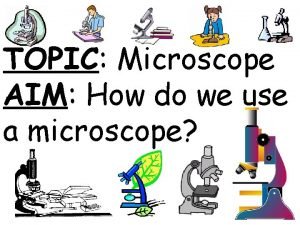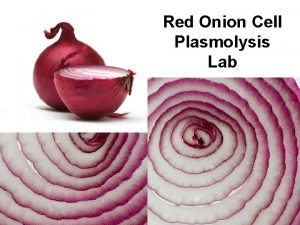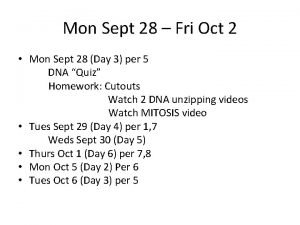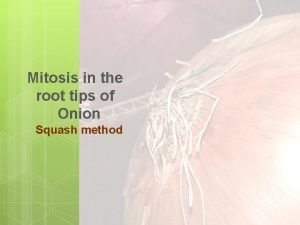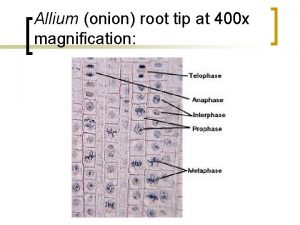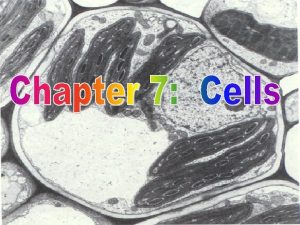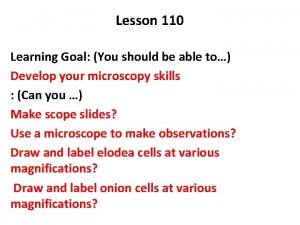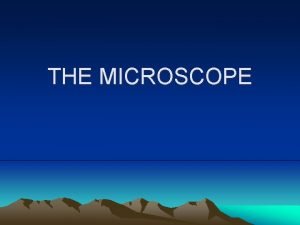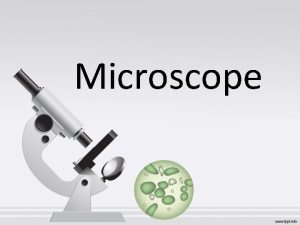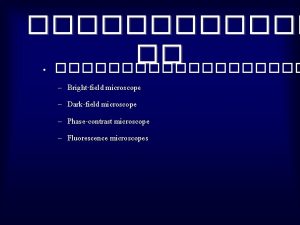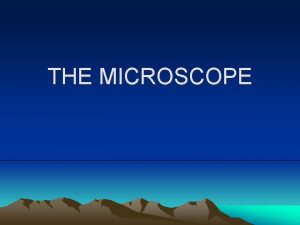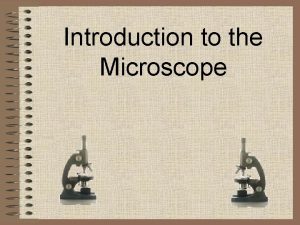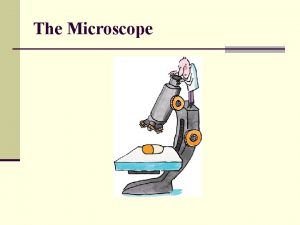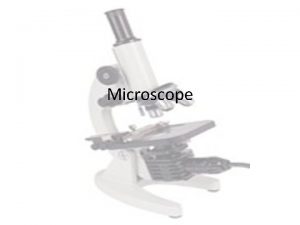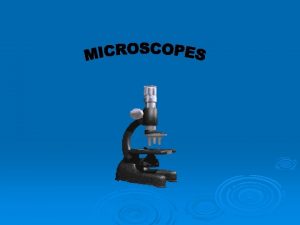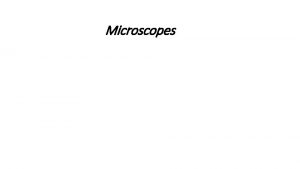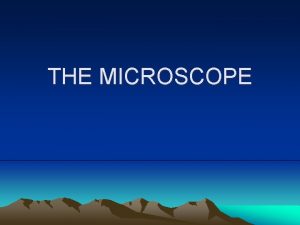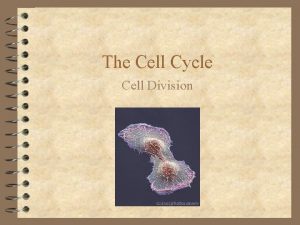Using the Microscope for the Cheek Onion Cell

















- Slides: 17

Using the Microscope for the Cheek & Onion Cell Lab

Carrying a Microscope A B

Storing The Microscope • Return the lowest power objective in place • Wrap the cord around the base • Return dustcover

Cleaning the Microscope • Use lens paper on all glass parts of the microscope. • Clean oil immersion lens with chemicals provided by your instructor

Parts of the Microscope • Ocular • Fine adjustment knob • Body tube • Stage • Nosepiece • Stage clips • Objective lenses (10, 40, 100 x) • Aperture • Arm • Course adjustment knob • Diaphragm • Light • Base

Microscope Parts A. B. C. D. E. F. G. H. I. J. K. L. M. Ocular Body tube Stage clip Revolving nose piece Objective Arm Stage Diaphragm Lever to move stage clip Course adjustment Fine adjustment Light source Base

Using the microscope • • • Always observe using the LOWEST POWER objective first. Focus using the COARSE ADJUSTMENT KNOB to bring the object into focus. Bring the object into sharp focus by using the fine adjustment knob. Focus, and then move to a higher power objective, if needed. Use only the FINE ADJUSTMENT KNOB when using the HIGHEST (longest) POWER OBJECTIVE. Keep both eyes open to reduce eyestrain. Determine total magnification of the object by multiplying the power of the ocular (10 x) the power by the power of the objective.

Preparing a wet mount Start with a clean slide and coverslip. Hold the slide and coverslip by their edges to avoid getting your fingerprints on their surfaces. Using tweezers, position the specimen in the centre of the slide. With the medicine dropper, place one drop of water on the specimen. Hold a coverslip over the sample at a 45° angle. One edge of the coverslip should touch the surface of the slide near the specimen. Lower the opposite edge of the coverslip over the sample. Make sure that no bubbles form beneath the coverslip.

Animal Cell

Plant Cell

Activity Prepare wet mount • Cheek cell • Onion cell Look at specimen under high power and draw what you see. Use proper clean-up technique

Cheek Cell

Epidermal Onion Cell

Activity 3 Prepare wet mount for dissecting scope • Pond water Look at specimen under high power and draw what you see. Use proper clean-up technique

Dispose Biological material

Dispose Sharps

Clean Up
 Onion cell microscope labeled
Onion cell microscope labeled Stained cheek cell
Stained cheek cell Anatomy chapter 3 cells and tissues
Anatomy chapter 3 cells and tissues Cheek cell
Cheek cell Cheek cell
Cheek cell Prophase 1
Prophase 1 Blue-colored glucose indicator solution
Blue-colored glucose indicator solution Onion cell plasmolysis lab
Onion cell plasmolysis lab 2 mon
2 mon Squash technique for mitosis
Squash technique for mitosis Onion root cell phases
Onion root cell phases State lab diffusion through a membrane answer key
State lab diffusion through a membrane answer key Which organelle is the site where proteins are made
Which organelle is the site where proteins are made Elodea cell
Elodea cell Onion cell
Onion cell Onion plasmolysis lab
Onion plasmolysis lab Onion cell
Onion cell Mitosis
Mitosis

